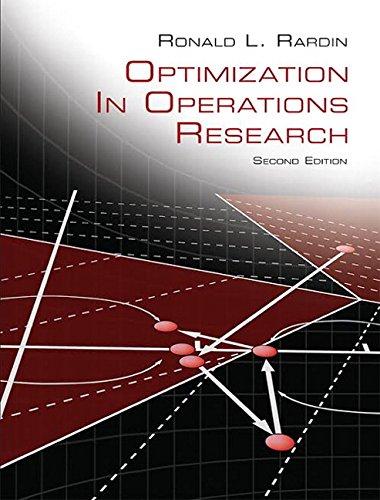Consider the following linear program: max 3z1 + z2 s.t. -2z1 + z2 2 z1 +
Question:
Consider the following linear program:
max 3z1 + z2 s.t. -2z1 + z2 … 2 z1 + z2 … 6 z1 … 4 z1, z2 Ú 0 After converting to standard form, solution of the model via Rudimentary Simplex Algorithm 5A produces the following sequence of steps:
(a) State the dual of the standard-form primal depicted at the top of this table, and enumerate all complementary slackness requirements between primal and dual.
(b) Compute the primal and dual basic solutions at each step of the given simplex computations, and check complementary slackness, to demonstrate that Algorithm 5A is following of the KKT strategy of maintaining primal feasibility and complementary slackness while seeking dual feasibility.
Fantastic news! We've Found the answer you've been seeking!
Step by Step Answer:
Related Book For 

Question Posted:





